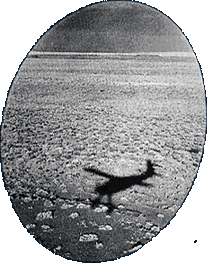|
"TheRodenCrater.org" is an archive of the original RodenCrater.org website, published from 1996-2003. For current information please visit the artist's website jamesturrell.com Roden Crater is a natural cinder volcano situated on the southwestern edge of the Painted Desert in northern Arizona. Since 1972, with grants from Dia Art Foundation, the Guggenheim Foundation, and the National Endowment for the Arts, James Turrell has been planning to transform the crater into a large-scale artwork, that relates, through the medium of light, to the universe of the surrounding sky, land, and culture. Turrell's project is now under construction under the direction of Dia Art Foundation and the Skystone Foundation with support from Lannan Foundation and is scheduled for public access in the year 2004 or later. Turrell began his career in California in the early
1960s as one of the leaders of a new group of artists working with light
and space. His artworks make manifest the physical presence of light
and heighten our visual perception. Over the past two decades, Turrell's
work has been recognized in exhibitions in major museums around the
world; in addition, several cities have commissioned permanent works.
The artist currently resides in Flagstaff, Arizona, in order to oversee
the completion of his most important work, Roden Crater. |
 |
| This web site is designed to provide an overview
of James Turrell's Roden Crater project. It includes background on the
artist and his related work, as well as information which extends beyond
art-historical concerns to complimentary issues: astronomy, ranching,
ecology, history, and culture.
Each subsequent chapter of this web site addresses a different aspect of Roden Crater, from conception to construction. Indexed from Outside Looking In to Inside Looking Out, it suggests the reflexive nature of the many perspectives from which Turrell's most ambitious work can be viewed: between inside and outside, sky and earth, nature and culture, ancient and future. Outside Looking In and Inside Looking Out also refers to the way that the shape of the crater itself is analogous to the shape of our eyes. Roden Crater sees (rather than represents) the sky and time, and summons our own vision as strongly as that of the artist. |
 |
| |
|
|
This electronic publication, created in 1997, was made possible by generous grants from
|
|